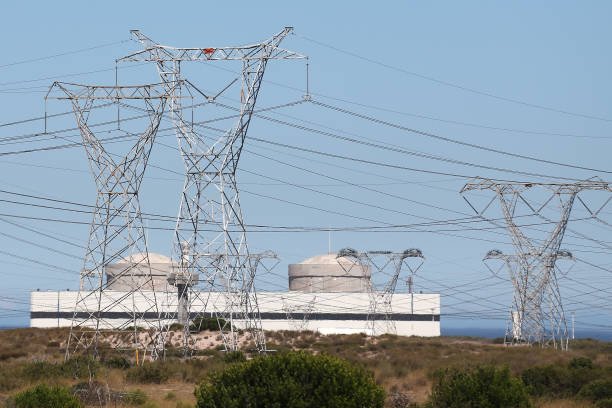On this page, we discuss the characteristics that make Eskom a Monopoly:
Eskom, short for Eskom Holdings SOC Limited, is South Africa’s state-owned electricity utility. Established in 1923, it has played a crucial role in powering the nation’s industrial and economic growth. However, over the years, Eskom has faced numerous controversies, with one of the most significant criticisms being its monopolistic nature. This article explores the characteristics that contribute to Eskom’s status as a monopoly and the implications it has on South Africa’s energy sector.
Highlights
- Eskom’s monopoly in South Africa’s energy sector is fueled by its government ownership and control, limiting competition and consolidating its dominant position.
- The company’s control over the infrastructure and national power grid enables it to dictate electricity generation, distribution, and pricing, further solidifying its monopoly.
- High barriers to entry, including significant investments and complex licensing processes, discourage potential competitors from entering the market and challenging Eskom’s dominance.
- Eskom’s size and economies of scale give it a cost advantage over smaller players, making it challenging for competitors to match its pricing and compete effectively.
- The company’s influence over energy sector regulations allows it to shape policies in its favor, hindering competition and impeding the growth of independent power producers.
Five Characteristics that Make Eskom a Monopoly
- Government Ownership and Control: Eskom’s monopolistic tendencies stem from its status as a state-owned enterprise. The South African government exercises substantial control over the company’s operations, including its strategic decisions, policy-making, and appointment of key executives. This level of government involvement often limits competition within the energy sector, giving Eskom a dominant market position.
- Infrastructure and Network Control: Eskom’s extensive infrastructure and control over the national power grid further solidify its monopoly. The company owns and operates multiple power plants, transmission lines, and distribution networks across the country. Such control allows Eskom to dictate the terms of electricity generation, distribution, and pricing, leaving limited room for independent power producers or other competitors to enter the market.
- Limited Market Entry Barriers: Eskom’s monopoly is also reinforced by significant barriers to entry for potential competitors. Establishing a power generation company requires substantial investments in infrastructure, technology, and regulatory compliance. Moreover, navigating the complex licensing processes and securing adequate fuel supplies pose additional challenges. These barriers create a high-cost entry threshold, effectively deterring competition and enabling Eskom’s dominance.
- Economies of Scale: Eskom benefits from economies of scale due to its large size and widespread operations. The company’s extensive power generation capabilities allow it to produce electricity at lower costs compared to smaller players. This cost advantage makes it difficult for potential competitors to match Eskom’s pricing, further entrenching its monopoly position and discouraging market entry.
- Regulatory Influence: As a state-owned enterprise, Eskom wields considerable influence over energy sector regulations and policies. The company’s close relationship with the government provides it with the ability to shape the regulatory landscape in its favor. This influence allows Eskom to maintain its monopoly by creating regulations that protect its interests, hinder competition, and discourage the growth of independent power producers.
Implications of Eskom’s Monopoly:
- Lack of Competition: Eskom’s monopoly limits competition in the energy sector, which can stifle innovation, hinder technological advancements, and impede market efficiency. With minimal competition, there is little incentive for Eskom to improve its operations, invest in renewable energy sources, or address customer concerns promptly.
- Pricing Control: Eskom’s monopolistic position gives it substantial control over electricity pricing. While this allows the company to cross-subsidize certain sectors or regions, it also makes electricity prices susceptible to inefficiencies and potential exploitation. Consumers may face higher prices due to the lack of competitive pressure and limited options for alternative energy providers.
- Reliability Concerns: The concentration of power in a single entity like Eskom raises concerns about the reliability of electricity supply. A monopoly may not be as responsive to changing market conditions, and the lack of competition may lead to complacency or inefficiencies in power generation and distribution. This could result in frequent power outages and inadequate infrastructure maintenance, impacting the overall stability of the energy grid.
Eskom’s monopoly in South Africa’s energy sector is characterized by government ownership and control, infrastructure dominance, limited market entry barriers, economies of scale, and regulatory influence. While the company has played a vital role in providing electricity to the nation, its monopoly status presents challenges such as limited competition

